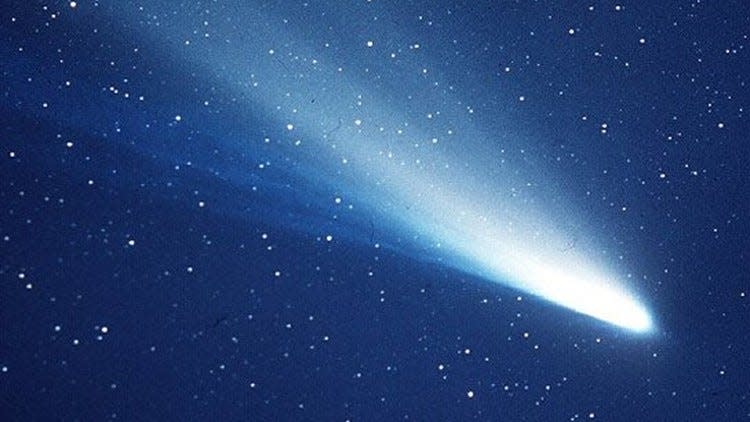Orionid meteor shower to peak early Friday morning: Here's how to see it
Are you an early riser? Do you live somewhere with little to no light pollution, or know of a nearby secret retreat? If yes to both, you're in for a treat.
The Orionid meteor shower, active each year between Sept. 26 and Nov. 22, will peak in the early morning hours Friday.
The annual meteor shower is considered by NASA astronomers to be one of the most beautiful to grace our skies. Orionid meteors are known for their brightness and speed and leave glowing "trains" that last several seconds to minutes, according to NASA. Some even become fireballs.
How can I watch the Orionid meteor shower?
Ideal viewing areas are those away from cities and street lights. NASA recommends lying flat on your back with your feet facing southeast.
Feel free to bring a blanket. Or a sleeping bag. The low tonight in Greater Columbus is expected to be 35 degrees.
The National Weather Service on Thursday morning said that skies in the Columbus and Cleveland areas would be cloudy Thursday evening, then gradually clear throughout the night. Southwest Ohio, namely Cincinnati, is expected to have clear skies.
More:Here are more sky events to check out this year
Once you find a spot, give your eyes at least 30 minutes to fully adjust to darkness.
The show will last from midnight to dawn, according to NASA, and the space agency estimates that at peak activity, stargazers will see about 15 Orionid meteors per hour in moonless skies. (The moon is currently in a waning crescent phase, meaning it is about a quarter full.)
How does the Orionid meteor shower form?
Orionids meteors are pieces of dust and detritus shed from the famed Comet Halley, or Halley's Comet.
Although the comet takes 76 years to orbit the Sun and isn't expected to enter the inner solar system again until 2061, the debris left in its wake from previous journeys has lasted for centuries.

The annual Orionid and Eta Aquarid meteor showers are created when dust and debris from Comet Halley collides with our atmosphere as Earth makes its way around the Sun.
How did the Orionids get their name?
The Orionid meteors are named after the Orion constellation. Not because they originate from the constellation, but because they appear to come from it.
NASA says the constellation for which a meteor shower is named only serves as a way to help stargazers determine which shower they're looking at.
Monroe Trombly covers breaking and trending news.
mtrombly@dispatch.com
@monroetrombly
This article originally appeared on The Columbus Dispatch: How to watch Orionid meteor shower as it peaks early Friday morning

